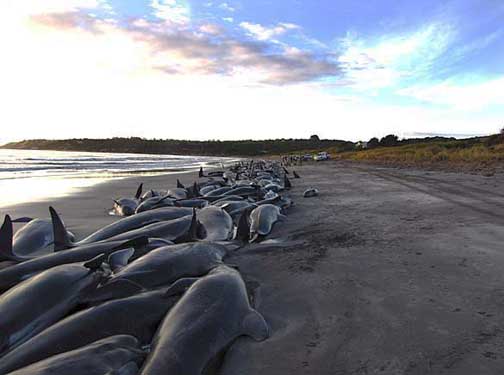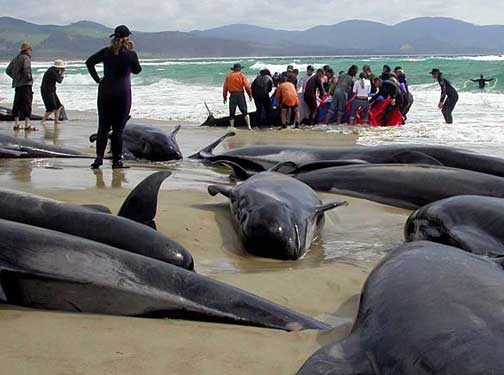“An effort was made in the large King Island stranding to return the animals to deeper water, but in some cases, the animal turned around from deeper water and went straight back to the beach.”
- Scott Baker, Ph.D., OSU Marine Mammal Institute
“It is pretty darn sad, you can hear them crying.”
- John Nievaart, King Island, Tasmania resident


 March 2, 2009
March 2, 2009
“One of the biggest mass beachings in Australia, 200 pilot whales came ashore on King Island on Sunday evening, March 1, only 54 of which are still alive. Among the whales are a number of dolphins, according to Chris Arthur, from Tasmania's Parks and Wildlife. Around 150 local people are helping parks officials in trying to refloat the whales from a Naracoopa beach and shepherd them back to sea, where a large number of whales were still milling in a pod.”
March 6, 2009 Newport, Oregon - Scientists who study whales and dolphins are puzzled about repeated strandings of large numbers of pilot whales – which are actually large dolphins – and other dolphins and sperm whales on or around King Island north of the Australian state, Tasmania. There was also highly strange – perhaps unprecedented behavior – in Manila Bay, Philippines, last month on February 10, 2009, when 500 melon-headed dolphins filled Manila Bay and swam back and forth as if completely disoriented.
Click here to subscribe and get instant access to read this report.
Click here to check your existing subscription status.
Existing members, login below:
© 1998 - 2025 by Linda Moulton Howe.
All Rights Reserved.


